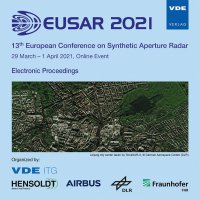A Comparison of L-band and S-band Interferometry and Tomography of the BERMS Borel Forest with UAVSAR and F-SAR Datasets
Conference: EUSAR 2021 - 13th European Conference on Synthetic Aperture Radar
03/29/2021 - 04/01/2021 at online
Proceedings: EUSAR 2021
Pages: 4Language: englishTyp: PDF
Authors:
Hensley, Scott; Ahmed, Razi; Chapman, Bruce; Hawkins, Brian; Lavalle, Marco; Pinto, Naiara; Treuhaft, Robert (Jet Propulsion Laboratory, California Institute of Technology, Pasadena CA, USA)
Pardini, Matteo; Papathanassiou, Kostas (German Aerospace Center (DLR), Microwave and Radar Institute, Wessling, Germany)
Siqueria, Paul (Microwave Remote Sensing Laboratory, University of Massachusetts, Amherst, MA, USA)
Abstract:
SAR tomographic methods have proven extremely adept at measuring vegetation vertical structure at a variety of wavelengths including L and P-bands. The three dimensional structure of vegetation and its changes resulting from either natural or anthropogenic causes are key parameters in monitoring ecosystems. NASA and ESA conducted flight experiments with the NASA/JPL UAVSAR and DLR F-SAR systems respectively at the BERMS site near Saskatoon, Canada on August 19 and 23 of 2018 respectively. Tomographic data sets were collected at L-band by the NASA/JPL UAVSAR L-band radar and at L-band and S-band by the DLR F-SAR system. Ground truth data sets and lidar data from the NASA LVIS system were also acquired. We compare L-band and S-band tomography from the two systems to each other and to the lidar data sets and use these data to estimate biomass and assess spatial gradients in the canopy vertical structure. We also compare our data with simulated boreal forest data to assess the sensitivity to both data collection geometry and canopy parameters.


